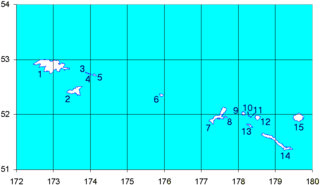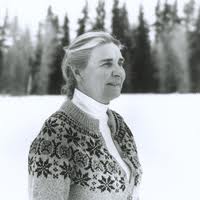Related Research Articles

Alaska is a U.S. state on the northwest extremity of North America. A semi-exclave of the U.S., it borders British Columbia and the Yukon in Canada to the east, and it shares a western maritime border in the Bering Strait with the Russian Federation's Chukotka Autonomous Okrug. To the north are the Chukchi and Beaufort Seas of the Arctic Ocean, and the Pacific Ocean lies to the south and southwest.

The Arctic National Wildlife Refuge is a national wildlife refuge in northeastern Alaska, United States on traditional Gwich'in lands. It consists of 19,286,722 acres (78,050.59 km2) in the Alaska North Slope region. It is the largest national wildlife refuge in the country, slightly larger than the Yukon Delta National Wildlife Refuge. The refuge is administered from offices in Fairbanks. ANWR includes a large variety of species of plants and animals, such as polar bears, grizzly bears, black bears, moose, caribou, wolves, eagles, lynx, wolverine, marten, beaver and migratory birds, which rely on the refuge.
Homer is a city in Kenai Peninsula Borough in the U.S. state of Alaska. It is 218 mi (351 km) southwest of Anchorage. According to the 2020 Census, the population is 5,522, up from 5,003 in 2010. Long known as the "Halibut Fishing Capital of the World", Homer is also nicknamed "the end of the road", and more recently, "the cosmic hamlet by the sea".

The Iñupiat are a group of indigenous Alaskans whose traditional territory roughly spans northeast from Norton Sound on the Bering Sea to the northernmost part of the Canada–United States border. Their current communities include 34 villages across Iñupiat Nunaat, including seven Alaskan villages in the North Slope Borough, affiliated with the Arctic Slope Regional Corporation; eleven villages in Northwest Arctic Borough; and sixteen villages affiliated with the Bering Straits Regional Corporation. They often claim to be the first people of the Kauwerak.

A sled dog is a dog trained and used to pull a land vehicle in harness, most commonly a sled over snow.

The Alaska North Slope is the region of the U.S. state of Alaska located on the northern slope of the Brooks Range along the coast of two marginal seas of the Arctic Ocean, the Chukchi Sea being on the western side of Point Barrow, and the Beaufort Sea on the eastern.

Christopher Johnson McCandless, also known by his pseudonym "Alexander Supertramp", was an American adventurer who sought an increasingly nomadic lifestyle as he grew up. McCandless is the subject of Into the Wild, a nonfiction book by Jon Krakauer that was later made into a full-length feature film.

The Gwichʼin are an Athabaskan-speaking First Nations people of Canada and an Alaska Native people. They live in the northwestern part of North America, mostly above the Arctic Circle.

Buldir Island is a small island in the western Aleutian Islands of the U.S. state of Alaska. It is 4.3 miles (6.9 km) long and 2.5 miles (4.0 km) wide with an area of 7.4482 square miles (19.291 km2). Buldir is farther from the nearest land than any other Aleutian Island. Its nearest neighbors are Kiska in the Rat Island group, 68 miles (109 km) to the east, and Shemya in the Near Island group, 64 miles (103 km) to the west. Buldir Island is uninhabited. It is part of the Alaska Maritime National Wildlife Refuge. It has been designated a Research Natural Area.

The history of Alaska dates back to the Upper Paleolithic period, when foraging groups crossed the Bering land bridge into what is now western Alaska. At the time of European contact by the Russian explorers, the area was populated by Alaska Native groups. The name "Alaska" derives from the Aleut word Alaxsxaq, meaning "mainland".

The question of whether to drill for oil in the Arctic National Wildlife Refuge (ANWR) has been an ongoing political controversy in the United States since 1977. As of 2017, Republicans have attempted to allow drilling in ANWR almost fifty times, finally being successful with the passage of the Tax Cuts and Jobs Act of 2017.

The Yukon–Kuskokwim Delta is a river delta located where the Yukon and Kuskokwim rivers empty into the Bering Sea on the west coast of the U.S. state of Alaska. At approximately 129,500 square kilometers (50,000 sq mi) in size, it is one of the largest deltas in the world. It is larger than the Mississippi River Delta ; it is comparable in size to the entire U.S. state of Louisiana. The delta, which consists mainly of tundra, is protected as part of the Yukon Delta National Wildlife Refuge.

Wien Air Alaska (IATA: WC) was a United States airline that was the result of a merger of Northern Consolidated Airlines(NCA) and Wien Alaska Airways. It initially used the name Wien Consolidated Airlines following the merger in 1968. The company was famous for being the first airline in Alaska, and one of the first in the United States. It ceased operations on 23 November 1984, at which point it was operating as Wien Airlines.

Celia Hunter was an American environmentalist and conservationist. She was conferred the highest award by the Sierra Club, The John Muir Award, in 1991. She was presented the highest award by the Wilderness Society, The Robert Marshall Award, in 1998.
The Alaska Department of Natural Resources is a department within the government of Alaska in the United States of America. The department has the mission of responsibly developing Alaska's resources by making them available for maximum use and benefit consistent with the public interest.

The following outline is provided as an overview of and topical guide to the U.S. state of Alaska:
Flying Wild Alaska is a documentary television series that aired on Discovery Channel in 2011 and 2012.
Founded in 1980, the Alaska Conservation Foundation (ACF) is a nonprofit organization located in Anchorage, Alaska. Its focus is in finding ways to sustain Alaska's wildlife, coastlines, and mountains from the effects of climate change. ACF's largest contributions come from the funding that they provide for organizations around Alaska that follow a similar pursuit of environmental conservation. As of 2020, it is the only public foundation dedicated to conservation in Alaska. Through the support of individuals and foundations for nearly 40 years, ACF has awarded more than $52 million in grants to over 200 grassroots organizations and individuals working to protect and manage Alaska's natural resources.
Paul Joseph John was an American Yup'ik elder, cultural advocate, and commercial fisherman. John was a proponent of traditional Central Alaskan Yup'ik culture, including the use of the Central Alaskan Yup'ik language and a subsistence lifestyle, including wild food. Additionally, John helped to settle the village of Toksook Bay, Alaska. A traditional chief of the Nunakauyarmiut tribe, he was a member of the Association of Village Council Presidents (AVCP), which is based in Bethel, Alaska.

The Final Frontiersman is a book by James Campbell that is set in Alaska, following the life of Heimo Korth in the Arctic National Wildlife Refuge. The book chronicles Korth learning how to trap and hunt with the Eskimos of St Lawrence Island, which is where he met and married his wife Edna. Together they moved to ANWR as homesteaders. Campbell recreates some trips that Heimo took to the Alaskan Interior so that he could list the day-to-day activities. Azita Osanloo says that it is not till the end of the book that the author really gets inside the head of his subject. At that time he recounts the tragedy of Edna's and Heimo's first daughter, Coleen, who died during a canoeing accident.
References
- ↑ John Martin, publisher, Vice Magazine. "Alaskan family lives isolated life in vast wildlife refuge". CNN.com. Retrieved 2020-04-04.
{{cite web}}: CS1 maint: multiple names: authors list (link) - ↑ "Surviving Alone in Alaska". YouTube. 2012-04-25. Retrieved 2020-04-04.
- ↑ Flying Wild Alaska season 1, episode 4
- ↑ "Heimo - Milloin on Heimon nimipäivä?". www.nimipaivat.fi (in Finnish). Retrieved 2020-11-12.